Cheese is living food. It thus needs to be stored in the best way possible. One of the best ways of storing cheese is using cheese paper. Alternatively, you can use cheesecloth to wrap it. In the absence of cheese paper and cheesecloth, you can use waxed paper or loose plastic. Just ensure that the cheese can breathe.
It is important that you keep your cheese fresh all the time. Whether you have aged cheese at home or bought it from a store, you need to get the most from your buck. This will only be achieved with the best cheese storing techniques. Keep reading for amazing techniques on how to store cheese at home.
Give Your Cheese Ample Space
Cheese is known to absorb flavors. Cheesecloth developers know this quite well thus the undyed production. It thus needs to be kept away from other food and drinks that may transfer the aroma to the cheese.
A cheese drawer is best suited to keep the cheese in its unique and secluded place. Well, not everyone has the luxury of these drawers in their homes. But you do not have to worry as the fridge will also serve the purpose. You just need to be more careful.
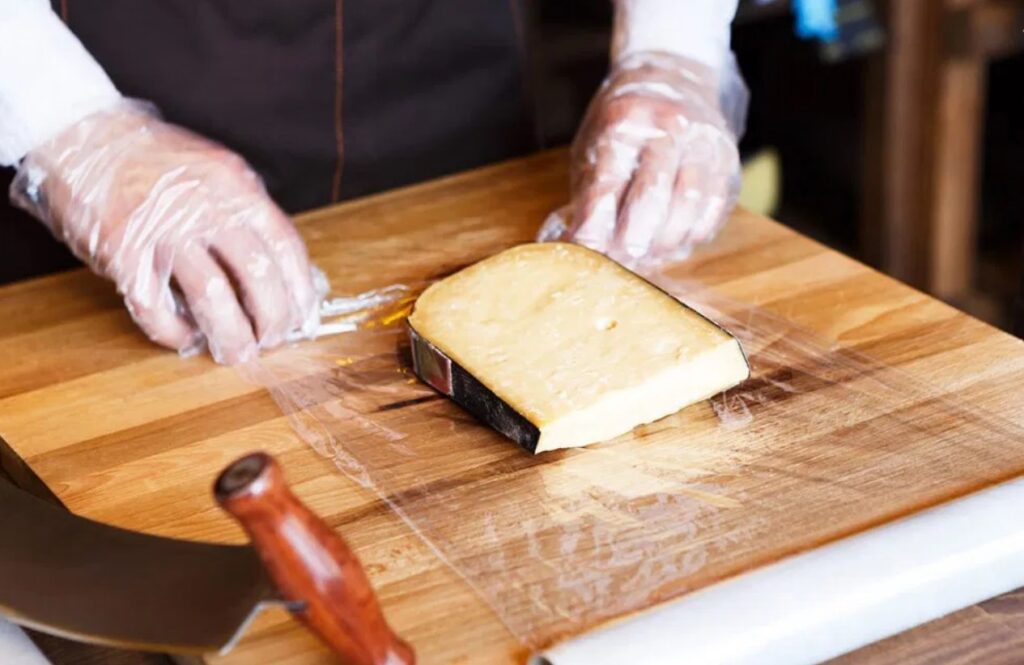
Wrap Your Cheese Right
Cheese wrapping is the deal-breaker in cheese storage. If done right, you will have juicy fresh cheese on your table all the time. If done wrong, the results will not be desirable. It is recommended that you wrap your cheese in cheese paper. Cheesecloth may also be used. Click here to learn more about cheesecloth and their uses.
Wrapping the cheese in a wax paper may also give you great results. You however need to couple it with a plastic bag. The plastic bag should be partially sealed to allow air to flow in and out of the cheese. Remember that cheese is alive.
Wrapping the cheese should be done with utmost care. It should be unwrapped, used and wrapped. Never leave it unwrapped. This is the only way of extending its shelf life and keeping it fresh and juicy.
Cheese Wrapping Guide
1. Prepare The Cheese
Have everything set up before you can start wrapping your cheese. Set cheese paper, waxed paper or parchment on a counter or table. The unwrapped wedge should be on top.
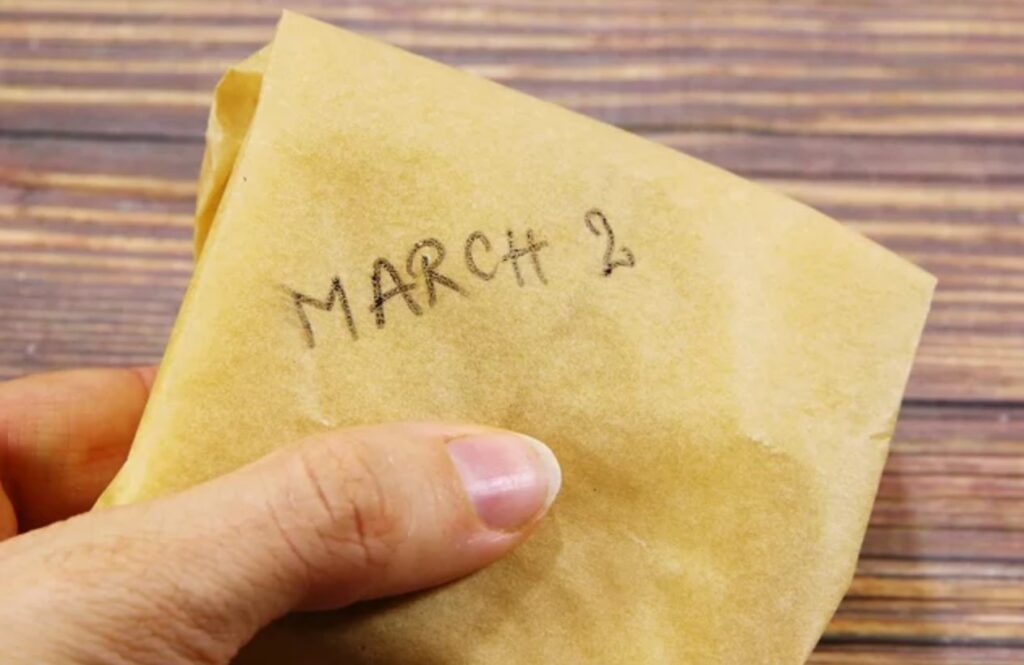
2. Wrap The Cheese
Place the cheese on the paper and systematically bring the edges of the paper up and over the cheese. Ensure that you are making clean folds as you do not want to repeat any of the folds. We recommend that you secure every fold with a tape. This will avoid unfolding.
3. Label Your Cheese
It is important that you label the cheese correctly. Indicate the date of purchase/ wrapping and the type of cheese. This will help you distinguish the cheese with ease.
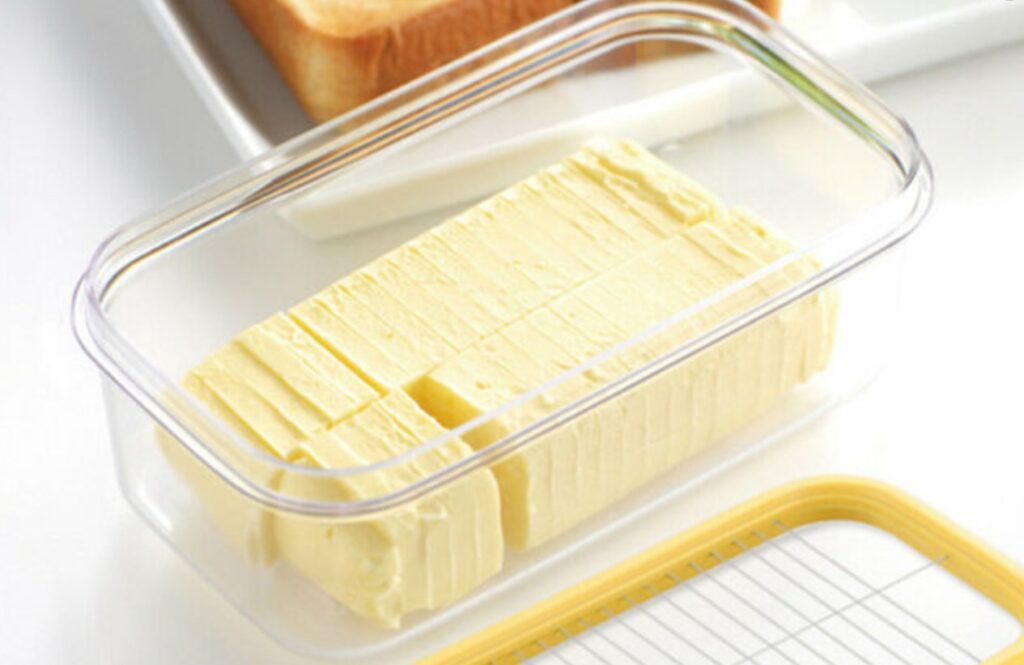
4. Whap With A Plastic Bag
The plastic bag is not mandatory but it helps avoid absorbing odors especially if the cheese will be kept in a common fridge. Ensure that the plastic bag allows some air to flow in and out.
5. Store The Cheese In The Fridge
Finally, place the wrapped cheese in the fridge. The intention here is not to freeze it but to keep it fresh. It should thus be placed in the warmest part of the fridge. Having a Tupperware drawer or container dedicated for cheese will be an added advantage.
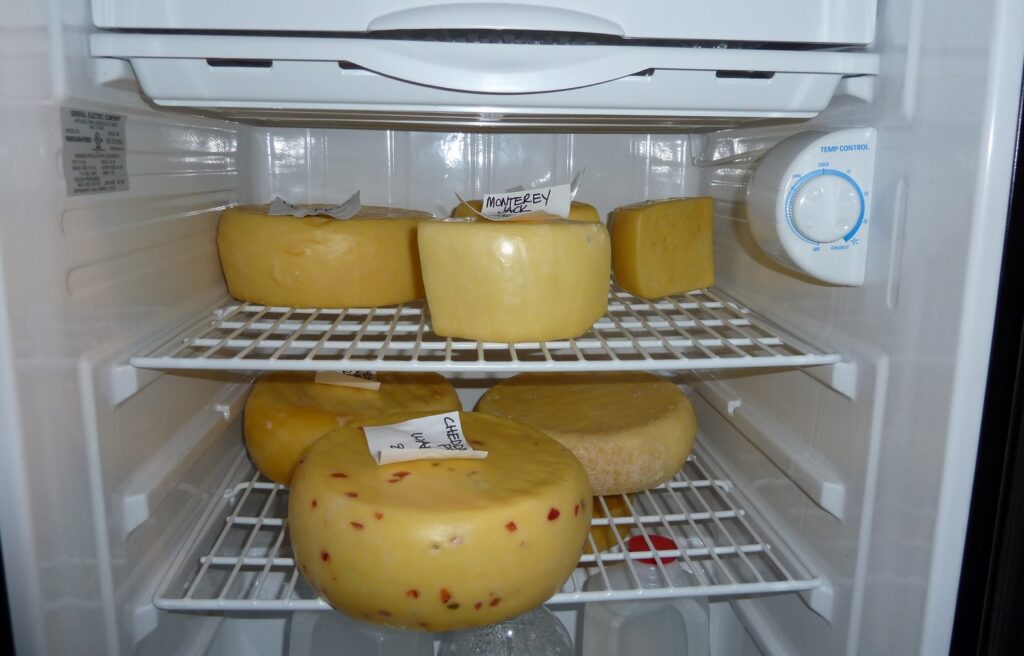
How To Store Your Shredded Cheese In Bags
If you happen to have some shredded cheese, do not be lost for options. It can easily be stored in resealable bags. The secret behind keeping it fresh is ensuring that you minimize the air in the bag before sealing it. Squeeze out as much air as you can for the best outcome.
Store Cheese In Containers
Fridges are the bet places to keep your cheese. They however do not guarantee constant temperature. This is the same fridge that you keep other foods and drinks. It will thus be opened over and over before the day comes to an end. This means that the temperatures will fluctuate frequently.
As the temperature fluctuates, the humidity hits the cheese kept openly in the fridge. To avoid such occurrences, ensure that the cheese is stored in a container. Glass containers are known to give better results than plastic containers. Plastic containers may transfer odors and flavors to the cheese unlike glass containers.
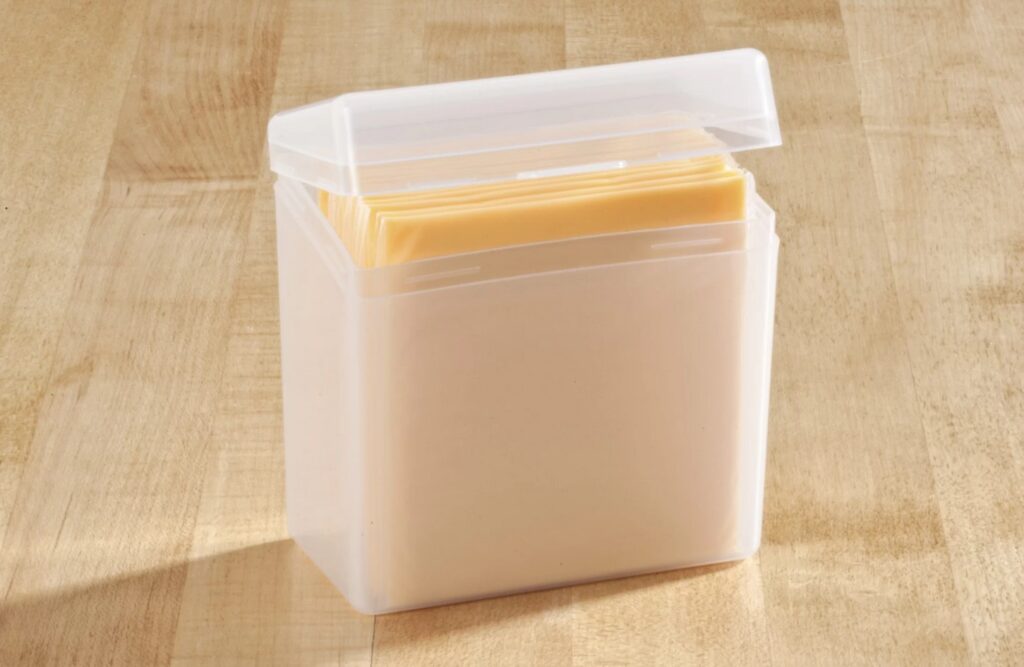
Don’t Store Cheese In A Freezer
Do not be mistaken to think that keeping your cheese in a freezer will give the same results as a fridge drawer. Freezers tend to change cheese texture. This makes it undesirable and may bring in an unpleasant taste.
There are a few cheese types that may maintain their texture even when frozen. These include swiss cheese, parm cheese and other types that are firm and hard. You can go for these options if a freezer is all you have in the house.
Use Oil To Prevent Molds
Molds creep in as soon as you leave the cheese. By the time you get to see them, they are at the maturity stage and may even be producing spores. The biggest cheese storage blunder is leaving surfaces or edges exposed. These become the breeding ground for molds.
Rub a light coat of oil over the cheese surface. Liquid oil such as olive oil, vegetable oil and canola give the best results. You can then store the cheese in a sealable bag or airtight container. Place the container in the fridge.

Only Replace Brine If Contaminated
When using brine to store cheese, its needless to change your brine every now and then. Contrary to many people’s belief, the brine should only be replaced if contaminated. Maintaining high hygiene standards will see you use the same brine for days or even weeks.
Replace the brine as soon as you touch it with dirty hands or utensil. The brine can be drained with a cheesecloth. Replace the brine immediately and seal the container. This lowers the risk of any contamination.
Tips To Successfully Store Cheese In Brine
- Maintain the right concentration. The brine should be prepared by dissolving 15ml (one tablespoon) of salt in 710ml (three cups) of water.
- More concentrated brine may store cheese longer. You however need to be ready for a saltier cheese treat.
- Swapping fresh water for brine spoils the cheese. It ruins the flavor and makes it go bad faster.

Conclusion
Cheese isn’t cheap. We pay top dollar for the best cheese. Such priced and treasured commodity shouldn’t go bad. You shouldn’t be in a rush to eat it all either. The only sure way of savoring your cheese is having a reliable storage.
We hope that the tips and techniques outlined here will help you make the best of your treasured cheese. Use the techniques to store and extend your cheese shelf life. Well, just do not store it beyond its shelf life just because you can! Enjoy your cheese.





